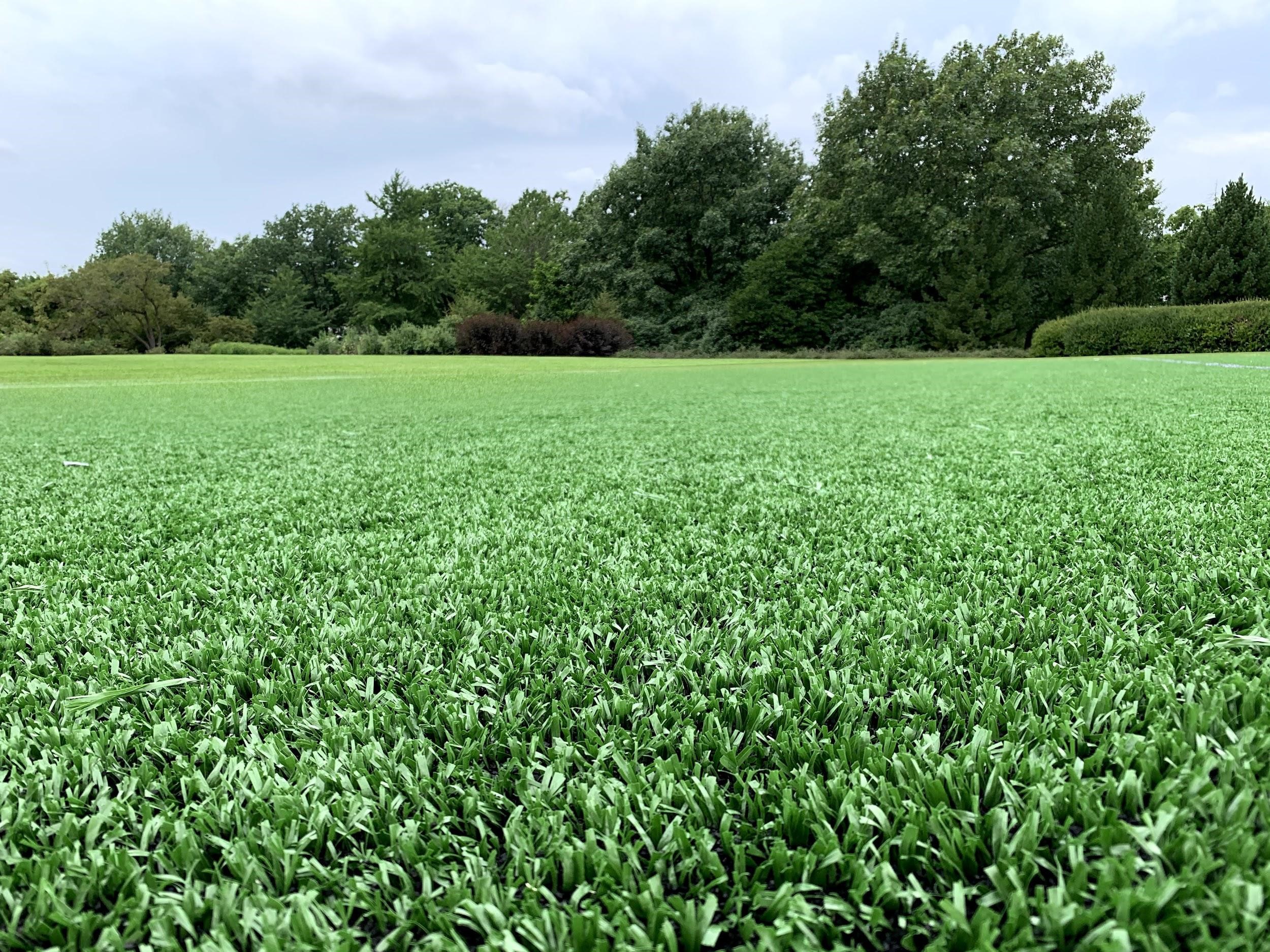By Michael Barnes
Globally many cities have implemented ‘re-greening’ programs to meet sustainability goals and deliver enhancements to the quality of life for their residents. However, turfgrass has most often been thought of as a problematic part of urban landscapes, being not ‘green’ enough to be part of re-greening programs that have largely focused exclusively on trees. To date, such approaches have mostly ignored advancements in turf management as well as low-input varieties of turfgrasses for both warm and cool climates.
An unusual but not unexpected outcome is homeowners and cities turning to artificial turf to provide the necessary groundcover for relaxation and recreation in lieu of natural turfgrass (Figure 1). Natural to artificial swaps are done for a variety of reasons but most are related to maintenance requirements coupled with high input concerns of natural turfgrass (e.g., water, fertilizer). While specific research is being conducted related to the environmental and ecological impacts of artificial turf, no research to date has addressed how regular citizens, the main users of public areas of turfgrass, actually feel about artificial turfgrass spaces.
In an effort to address this significant gap, we have undertaken research aimed at understanding how individuals feel about artificial turfgrass compared to natural turfgrass. This work has two specific aims: the first is related to understanding how likely individuals are to engage in various activities such as having a picnic or playing with a pet on an artificial lawn vs a natural lawn, the second is seeing if differences exist in mental health and well-being being benefits between the two lawn types.
The outcomes of this work will provide a first look at how the group most impacted by these changes, actual users of turfgrass lawns, might interact with and feel about artificial turfgrass compared to natural turfgrass. We hope that these findings will help decision-makers and public land managers make informed decisions driven by user input before swapping natural turfgrass for artificial turf and consider other available alternatives. Additionally, this work can spur new research addressing user requirements of turfgrass lawns that haven’t been investigated thoroughly.
The research above is funded by the Washington Turfgrass Seed Commission project ‘Investigating the social benefits of natural turfgrass in urban areas’ .
